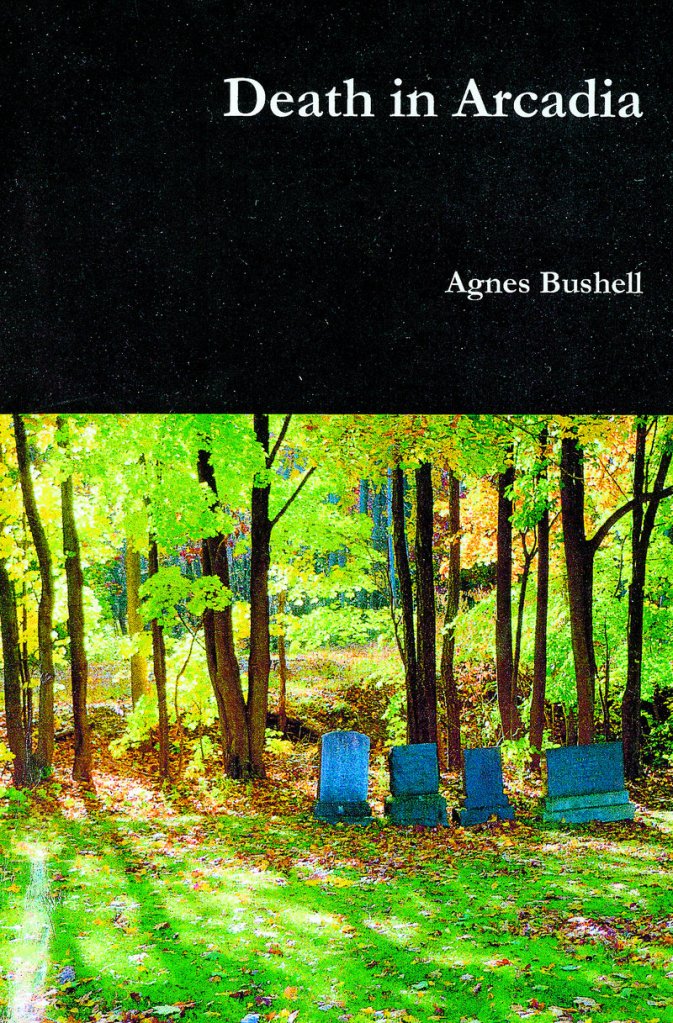Once in a great while, a book comes along that is so strikingly singular yet so pleasingly spot-on, it deserves a “Hurrah!” before anything else.
So “Hurrah!” to Agnes Bushell’s “Death in Arcadia,” a detective novel and fictional romp through Portland’s contemporary social strata, centered on what is undoubtedly the Maine College of Art.
Although the author makes no great pretension for her mystery — and this reviewer certainly does not want to inflate it way beyond its genre — she is perhaps the first fiction writer to break an attitudinal barrier and pick up on certain long-standing truths about the city and its multi-faceted inhabitants.
If this sounds lofty, it is not. The characters are believable and enjoyable, and work together against one another nicely — often in unseen ways.
A veteran of the Portland scene since the 1960s, Bushell has produced 10 previous novels. I commented on one of them, “The Enumerator,” in 1997. A San Francisco murder mystery set during the height of the AIDS crisis, that book was also a winner.
But “Death in Arcadia” is more fun, because readers can navigate Portland geography and its history going back to urban renewal.
Reviewing a mystery is dicey. One should never spoil the plot, so let it be said that the characters are wonderfully etched and edged, often unsure of themselves or too sure, distrusting and therefore following or having someone else followed. There are missing art objects, curious art projects and missing people. The crime targets a senior art project labeled “Arcadia” and sometime domain of the homeless.
There is Yuri Ambrosia, the smarmy or celebrated performance artist living as a homeless man; “The Greek Ladies,” a seasoned coterie of amateur detectives; and Glenn Darius, a ’60s lefty turned condo entrepreneur and head of the art college trustees; the shadowy AAW, a group bent on hiding public art objects to punish the powers that be (as if they would care).
This is rich stuff, handled by Bushell in her own peerless fashion. If the writer had workshopped the manuscript, or had a traditional publishing house editor gotten to it, the story would probably not have begun on the Mediterranean island of Mallorca, hopscotched to Barcellona and skipped to Maine. It might also have had one or two dominant characters instead of dancing from one to another. Thank heavens Bushell chose her own, anything but predictable, storyline.
From an insider’s pen to another insider’s ear, the dialogue is pitch-perfect against a clearly wrought setting. An art student asks another: “Do you know what’s happening downstairs? There are so many weird-looking old people in the building.” She is told: “It must be the Trustees. They have their own private opening. Sometimes they even buy things.” Incredulous: “I think some of them are up here. In the Sculpture Studio. Are they allowed up here?” The reply: “They run the school, Gina. They’re allowed anywhere.”
Then there are the art instructors. One is asked about a student. “Swan? No, but I don’t know everybody over there anymore. Is Swan a male or female?” On being told the latter, the instructor replies, “Ah, what does she make?” — the trite ever-thus reply. Another student muses, “We don’t make things, after all. We just rearrange what’s already there.” Trustees dress to the nines, belittle the staff, and congratulate themselves on producing an occasional major artist.
Portland should be honored that a writer of such stature has found us out and made us the setting of a champion read.
William David Barry is a local historian who has authored/co-authored five books, including “Tate House: Crown of the Maine Mast Trade” and the novel “Pyrrhus Venture.” He lives in Portland.
Send questions/comments to the editors.



Success. Please wait for the page to reload. If the page does not reload within 5 seconds, please refresh the page.
Enter your email and password to access comments.
Hi, to comment on stories you must . This profile is in addition to your subscription and website login.
Already have a commenting profile? .
Invalid username/password.
Please check your email to confirm and complete your registration.
Only subscribers are eligible to post comments. Please subscribe or login first for digital access. Here’s why.
Use the form below to reset your password. When you've submitted your account email, we will send an email with a reset code.